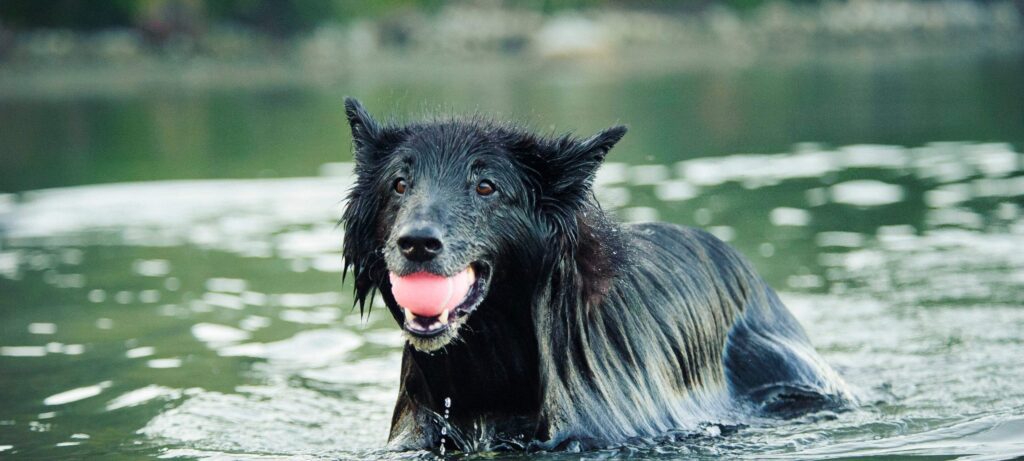What You Need to Know About Toxic Blue-Green Algae and Pets


You may have seen several stories in the news lately about blue-green algae. This sludge is indeed dangerous for animals and should be something you look out for this summer. Here’s everything you need to know about toxic algae and pets.
What Is Blue-Green Algae?
Blue-green algae, also known as cyanobacteria, is a group of organisms that are toxic to cats, dogs and other wildlife. There are even a few documented cases of toxicities in humans. Poisoning can occur when animals drink or even just swim in blue-green algae.
Cyanobacteria tends to bloom in fresh bodies of water when the weather is warm. Ideal conditions for the algae are over 75 degrees Fahrenheit and sunny. Overgrowth of cyanobacteria occurs when there are high levels of nitrogen in the water. These levels might come from flooding or runoff after rain or snow in areas where there are nearby fields. Pastures such as these tend to be fertilized with manure that is rich in nitrogen. Nitrogen might also be present as a result of grass or forest fires.
There are more than 30 different species of cyanobacteria. Different species in a toxic water bloom will result in different poisoning symptoms. For example, some species will create neurotoxic alkaloids called anatoxins. Other species will create hepatoxins. If only hepatoxins are present, symptoms of poisoning may show one or more hours after exposure to the blue-green algae. If hepatoxins and anatoxins are present, signs of poisoning could occur in just a few minutes.
What Does Blue-Green Algae Look Like?
Blue-green algae looks like what many may call “pond scum.” In bodies of water, cyanobacteria resembles pea-green slime or paint on the surface of the water. Some wind conditions may cause the cyanobacteria to concentrate close to the shore in areas where animals and people are more likely to drink or swim in it. In areas with severe blooms, you might even spot dead fish or waterfowl.
What Are the Symptoms of Intoxication?
Poisoning in animals, such as dogs and cats, can occur after drinking blue-green algae or even just swimming in the stuff. Symptoms of intoxication from cyanobacteria include:
- Panting
- Diarrhea
- Excessive drooling
- Seizures
- Disorientation
- Vomiting
- Liver failure
- Respiratory failure
Cyanobacteria poisoning can be fatal, so if your pet shows any of these symptoms of poisoning, you need to call your veterinarian as soon as possible!
How to Prevent Poisoning
Never allow pets to drink from stagnant water, such as ponds or lakes, that have green or blue-green slim on the surface or around the shoreline. Since poisoning can also occur from swimming, it’s also important to carefully inspect water before allowing your pet to go for a dip. And if your animal ever does swim in stagnant water, rinse them off thoroughly afterward with fresh water. Cyanobacteria can stick to fur and be consumed when your pet grooms themself so rinsing them off is key.
Again, if you suspect your pet may have blue-green algae poisoning, call your vet immediately!



